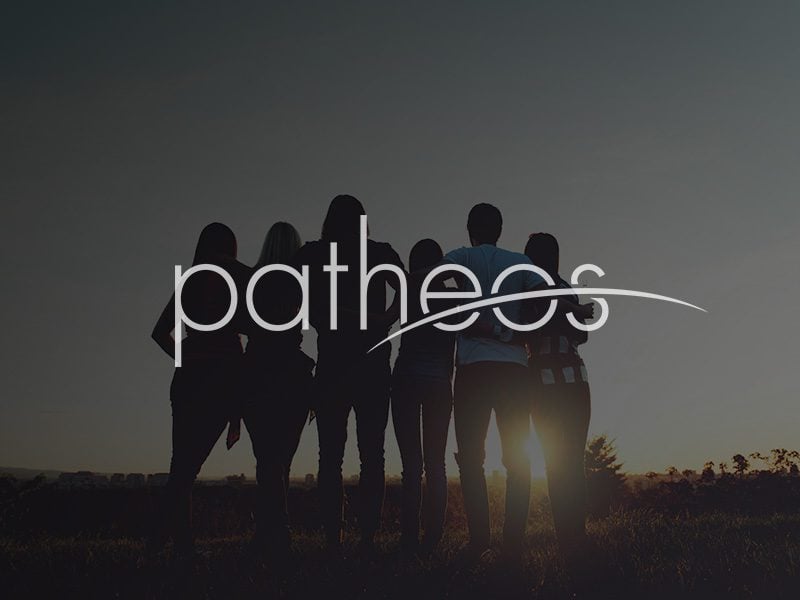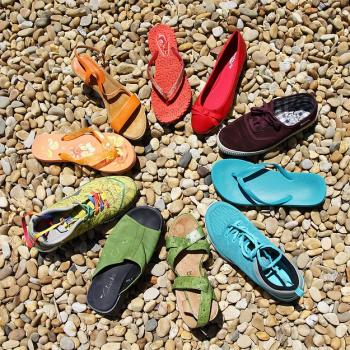
This past weekend I had the opportunity to speak at a church in Ohio about one of my favorite stories. It comes out of Genesis 16, and it’s about Hagar, a pregnant, run-away Egyptian slave girl who is trying to cross the Wilderness of Shur, a 700-square-mile desert that even armies of grown men found impassable.
When she’s lost in this wilderness, desperate to get back to Egypt to escape the abuses of her mistress, God appears to her as an angel and asks her two questions: “Where have you come from?” and “Where are you going?”
I love the story because it shows the generosity of God — who took on physical form to encounter a slave girl who is a relatively minor character in the Bible, and saves her from dying in the desert.
I love it because it shows how close to the heart of God the invisible or marginalized people in our world are to God’s heart — Hagar becomes the only person in the entire Bible to ever assign God a name.
And I love it because the name that Hagar gives God is “El Roi: The God Who Sees.”

Especially because I’ve felt invisible in my life, and because I wrote a book called The Invisible Girls, about a Somali refugee family on the verge of freezing and starving to death in the U.S., the idea of a God who sees is especially poignant to me.
I also love the story because in two succinct questions, God helps Hagar figure out why she’s in the mess she’s in, and what she can do in the present moment to live into the future story God’s writing in her life.
Where have you come from?
Where are you going?
One of the tools that’s been incredibly useful to me in my life as I answer those questions — where I’ve been in the past (emotionally, physically and spiritually), and where I feel called to go in the future — is called the Enneagram.
If you haven’t heard of it, it’s an ancient tool used by spiritual teachers for at least 1,000 years that describes 9 ways of being in the world. For each of the 9 types, it has a ladder from 1 – 9 that describes on one end what you’re like if you live into all your weaknesses and none of your strengths, all the way to what you look like if you live into all of your strengths and none of your weaknesses.
I like the Enneagram because it’s not just a “personality” test. It’s a much more holistic way of understanding what it means to be a person in the world.

I also like it because it doesn’t just frame you in purely positive terms. It points out the weaknesses and pitfalls that your Enneagram type tends to fall prey to, and it casts a vision for where you can go if you live into your strengths instead.
I took the assessment a few years ago (BTW, f you’re interested, there’s a free assessment here that takes about 15 minutes. Once you select your gender, it takes you into the actual assessment).
I’m a 6 (nicknamed the “Helper” or “Loyalist”) with a 7-wing (which makes me an extraverted version of a 6.) My strengths are compassion, empathy, helpfulness and loyalty. My weaknesses are fear, anxiety and an irrationally-strong reaction to, and fear of, abandonment or rejection.
Reading more about my type’s strengths and weaknesses was like someone was explaining me to me.
Since then, I’ve asked nearly all my friends to take it so I can understand them better. (I also may or may not have spent most of last Christmas vacation figuring out my family members’ types and figuring out how and why our family works the way it does!)
I ask the people close to me to take the assessment because I want to understand them better, I want to know how to communicate effectively with them, and I want to help accent their strengths and show grace for their weaknesses. I also want to understand their types because I want to learn how I can emulate their strengths — for instance, my mom’s tenacious defense of innocent children and elderly people who are often vulnerable to abuses (she’s a type 8). And my dad’s 24-7 availability to the people he shepherds as a pastor (he’s a type 2).
I’ve used the Enneagram not only as a tool to understand the people I love; I’ve also used it as a tool to help resolve interpersonal conflicts. Several times I’ve been at an impasse with someone, and once I understood their type, it was like a revelation. It helped me understand the specific dynamics at play, and I was able to see the situation through their eyes instead of mine.
Today, there’s a book launching called The Road Back To You by two of my new favorite people, Ian Morgan Cron and Suzanne Stabile, who have been teaching the Enneagram for along time.
 The book uses the Enneagram as a tool for transformation, as a way of asking the same two questions that Hagar — and all of us — have to ask of our lives.
The book uses the Enneagram as a tool for transformation, as a way of asking the same two questions that Hagar — and all of us — have to ask of our lives.
Where have you come from? (Where have your strengths and weaknesses taken you so far?)
Where are you going? (How can you identify/overcome your weaknesses, and then leverage your strengths, to reach your full potential?)
And then Ian and Suzanne go a step further by not only asking you where you’re coming from and where you’re going, but by also offering to show you the road that gets you there.

***
Click here, here or here to order a copy of the book.
Click here to listen to The Road Back To You podcast, where Ian and Suzanne interview one person from each of the 9 types, including Shauna Niequest, Nadia Bolz-Weber, Michael Gungor, Michael Wear and yours truly!)











